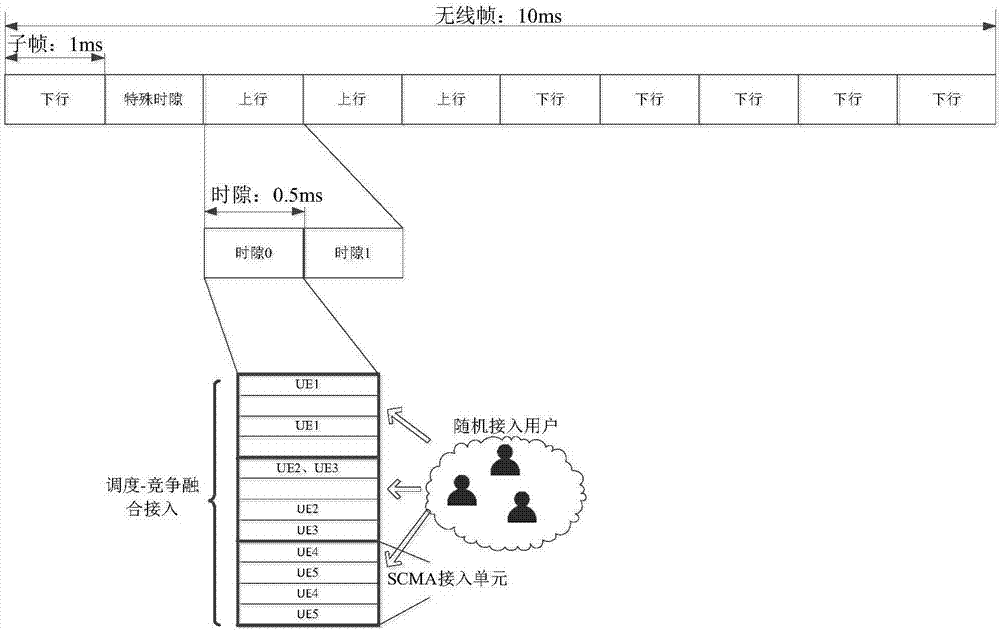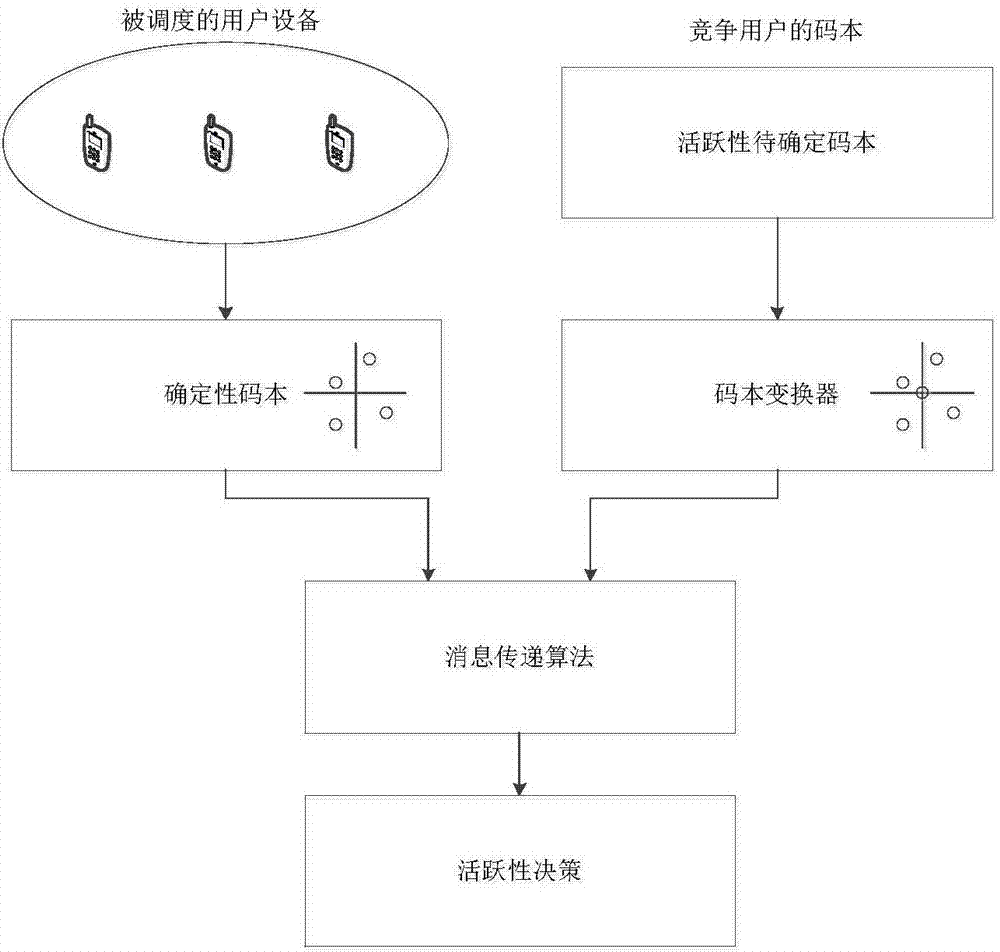Non-orthogonal multiple access method based on scheduling and competition fine-grained fusion
A non-orthogonal multiple access and access method technology, applied in the field of non-orthogonal multiple access, can solve the problems of restricting network capacity, spectrum utilization and service quality, and achieve multi-user diversity gain and improve network The effect of capacity
- Summary
- Abstract
- Description
- Claims
- Application Information
AI Technical Summary
Problems solved by technology
Method used
Image
Examples
specific Embodiment 1
[0041] Such as figure 1 As shown, the embodiment side focuses on implementing the scheduling and competition fine-grained fusion method proposed by the present invention in the SCMA-based cellular network. In order to ensure compatibility, the wireless frame structure of this embodiment follows the fourth generation mobile communication system (4G) specification.
[0042]Step 1: At the beginning of each wireless frame scheduling period, the BS first sets the ratio of uplink and downlink time slots, and then proceeds to step 2;
[0043] Step 2: The BS calculates the time-frequency resource (Resource Block, RB) position that needs to be occupied by the scheduling-competition integrated access mode in the uplink time slot, and allocates the uplink RB for the scheduled user equipment, and the allocated RB is consistent with the scheduling- The RB overlap occupied by the competitive converged access mode is transferred to step 3;
[0044] Step 3: The BS broadcasts the resource al...
specific Embodiment 2
[0054] Such as image 3 As shown, Embodiment 2 is based on the implementation method of Embodiment 1. The difference is that Embodiment 3 introduces uplink and downlink full-duplex technology. Therefore, in Embodiment 3, uplink scheduling, downlink scheduling, and contending users share the same RB resource.
[0055] Step 1: At the beginning of each wireless frame scheduling period, the BS first sets the ratio of uplink and downlink time slots, and then proceeds to step 2;
[0056] Step 2: The BS calculates the RB positions required by the integrated scheduling-competition access mode in the uplink time slot, and allocates uplink RBs and downlink RBs to the scheduled user equipment, and the allocated RBs are consistent with the integrated scheduling-competition access mode The occupied RBs overlap and go to step 3;
[0057] Step 3: The BS broadcasts the resource allocation result through the PDCCH, indicates the RB position occupied by the scheduling-competition integrated ac...
specific Embodiment 3
[0063] Such as Figure 4 As shown, the third embodiment focuses on implementing the scheduling and contention fine-grained fusion method proposed by the present invention in a cellular network based on power Non-orthogonal Multiple Access (NOMA).
[0064] Step 1: For the same time slot, frequency and spatial stream, the BS divides resources into N power layers (Power Layer) from the power domain for multiple user equipments to send uplink data, each power layer corresponds to a different transmission power, Then go to step 2;
[0065] Step 2: The BS directly schedules a part of the power layers to corresponding uplink user equipments through downlink control signaling, and proceeds to step 3.
[0066] Step 3: The BS assigns the subset power layers of the remaining power layers in step 2 to the competing access uplink user equipment through the downlink control signaling, and proceeds to step 4 for the scheduled users, and transfers to step 5 for the contending access users; ...
PUM
 Login to View More
Login to View More Abstract
Description
Claims
Application Information
 Login to View More
Login to View More - R&D
- Intellectual Property
- Life Sciences
- Materials
- Tech Scout
- Unparalleled Data Quality
- Higher Quality Content
- 60% Fewer Hallucinations
Browse by: Latest US Patents, China's latest patents, Technical Efficacy Thesaurus, Application Domain, Technology Topic, Popular Technical Reports.
© 2025 PatSnap. All rights reserved.Legal|Privacy policy|Modern Slavery Act Transparency Statement|Sitemap|About US| Contact US: help@patsnap.com



